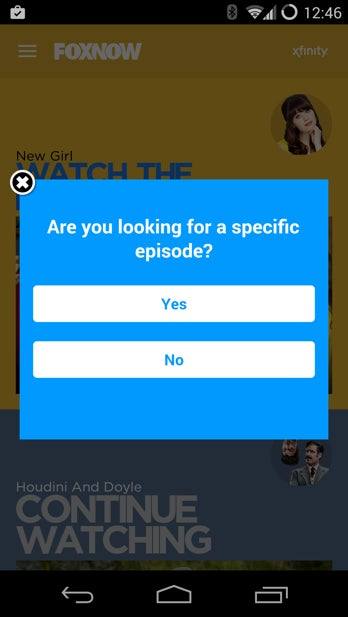Watching Primetime TV? Get to Know Your TV App.

Our journey starts at eight o’clock on a Tuesday evening, and you’re a television executive with digital oversight. Do you know how viewers are engaging with your mobile app? Even broadly speaking, do you know whether people are using your app as their first or their second screen?
First-Screen Viewers
When the mobile screen is a viewer’s first screen, is it driving more video views? The average person who watches videos on a smartphone watches the small screen for 2 hours and 31 minutes per week, according to “The Nielsen Total Audience Report.” That could be five 30-minute shows per week, which is almost a show every day. Clearly, personalized video recommendations that can take smartphone viewers directly to shows they love can go a long way toward not only establishing, but also solidifying their preference for your app over anybody else’s.
Second-Screen Viewers
When the mobile screen is a viewer’s second screen, is it driving tune-in to your linear broadcast? Research carried out at University of the West of England (UWE Bristol) found that viewers who enjoy quiz shows, game shows, and reality shows are more likely to use their smartphones as second screens; whereas, viewers of drama shows tend to put their phones away during broadcasts. Does your app have the right features to assure multiscreen viewers continue tuning in?
Answering the Crucial Questions
Some of these questions can be answered through in-app polls. For example, the Fox Now app is currently running a poll that asks users, “Are you looking for a specific episode?” The answers will help them determine whether their audience intends to use the app as a first screen to view specific episodes.

Your analytics team can answer other key questions as well as provide you with access to reports about how viewers engage with your app. You can use the reports to evaluate whether your mobile app is meeting the key performance indicators that you’ve set for it.
Both the survey responses from your app and the reports from your analytics team contribute to a feedback loop, which can be used to inform further improvements to your app and enhancements across the path that viewers take to get there. For instance, you can use Adobe Target to test different methods of personalizing the creative that’s promoting your app, the ads that are driving users to download your app, and of course, the experience within the app itself.
Putting it all Together
You’ll know that you’re on the right track when you’re as engaged with daily app usage as you are with following overnight ratings — not because it’s your job, but because you love the impact that personalized experiences have on your audience.